Talks in Washington moved quickly after a single proposal broke from the usual defense playbook. One plan outlines hundreds of satellites with no weapons aboard. As the plan takes shape, foreign officials are warning of consequences far beyond defense.
President Donald Trump’s announcement of the Golden Dome—a $175 billion missile defense system—has sparked immediate global attention. The project blends cutting-edge technology with a scale never before attempted in American defense. Still in its early stages, the system is already drawing sharp reactions.
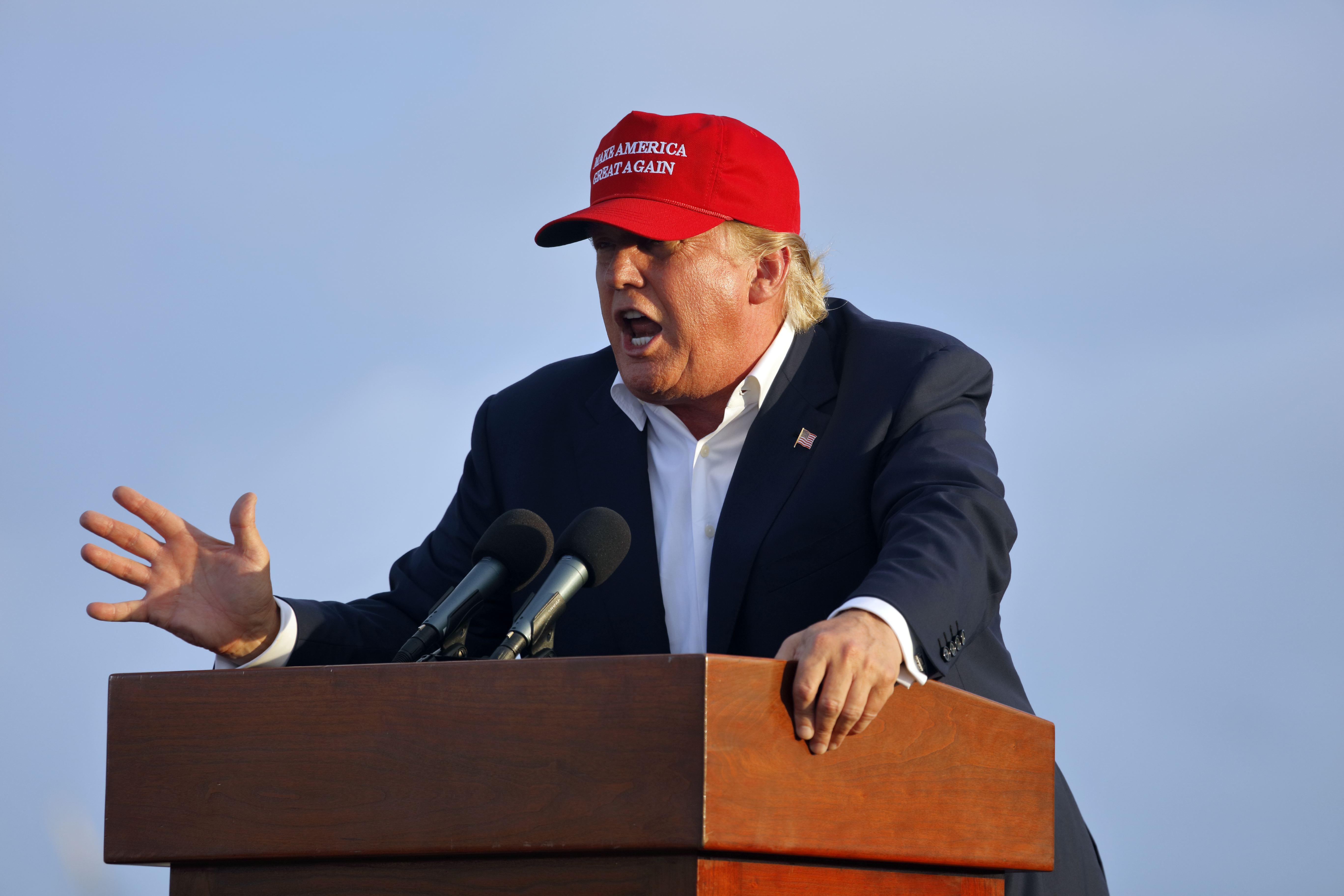
Donald Trump speaking during a rally in San Pedro, California on September 15, 2015 | Source: Getty Images
While domestic contractors race to secure roles in the program, foreign governments are sounding the alarm. China, in particular, has issued a formal warning, calling the project destabilizing and provocative. With private firms, political allies, and military officials now involved, the path from concept to reality is beginning to take shape.
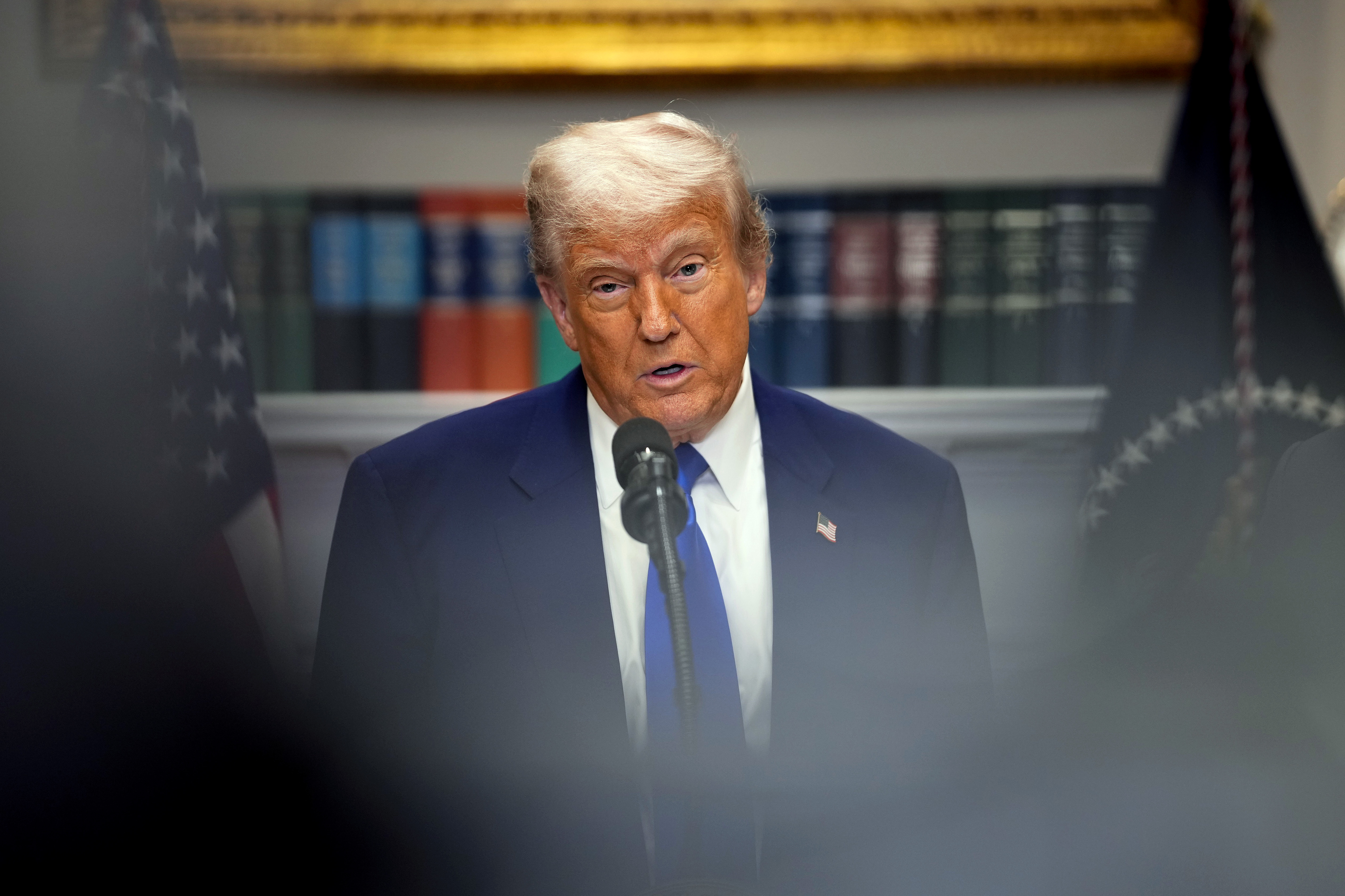
President Donald Trump at a press conference in the Roosevelt Room of the White House on May 12, 2025, in Washington, DC. | Source: Getty Images
President Trump first introduced the idea of the Golden Dome during a joint address to Congress in March 2025. Speaking to lawmakers, he requested funding for a new missile defense shield inspired by Israel’s Iron Dome, which he praised for its ability to intercept incoming threats.
“Israel has it, other places have it, and the United States should have it too,” he said. Trump linked the concept to former President Ronald Reagan’s 1980s-era Strategic Defense Initiative, claiming the technology of that era hadn’t been ready, but “now we have the technology.”
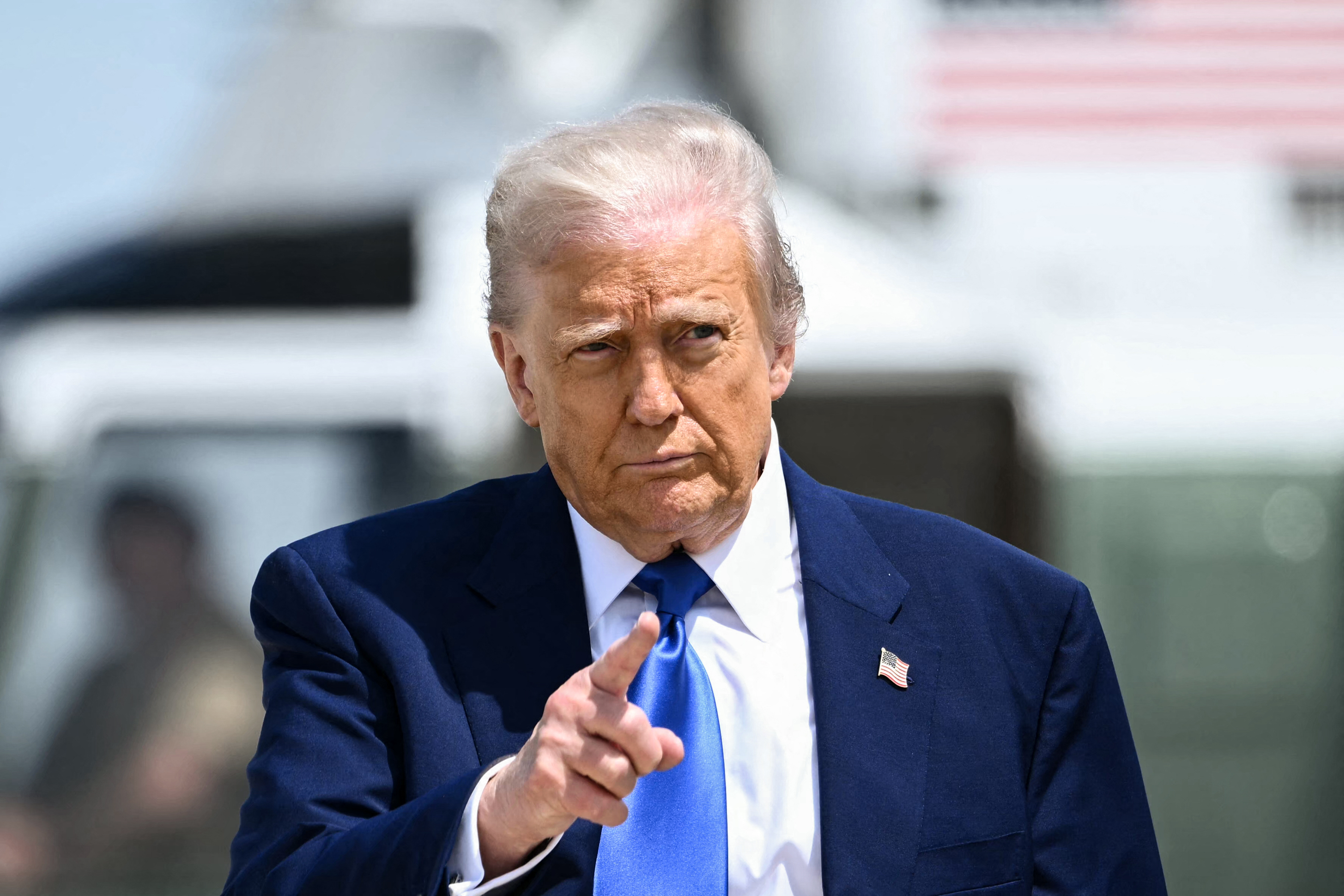
US President Donald Trump pictured on May 12, 2025 | Source: Getty Images
Speaking from the Oval Office in May 2025 alongside Defense Secretary Pete Hegseth, Trump said he had proposed the concept to U.S. military leaders, not the other way around. He stated, “I suggested it and they all said, ‘We love the idea, sir.’ That’s the way it’s gotta be, right? But they want it. And they wanted it badly once it was suggested.”
The proposal quickly moved from suggestion to action, with the administration selecting a design and laying out a multi-layered system that would defend the U.S. using advanced land, sea, and space technologies.
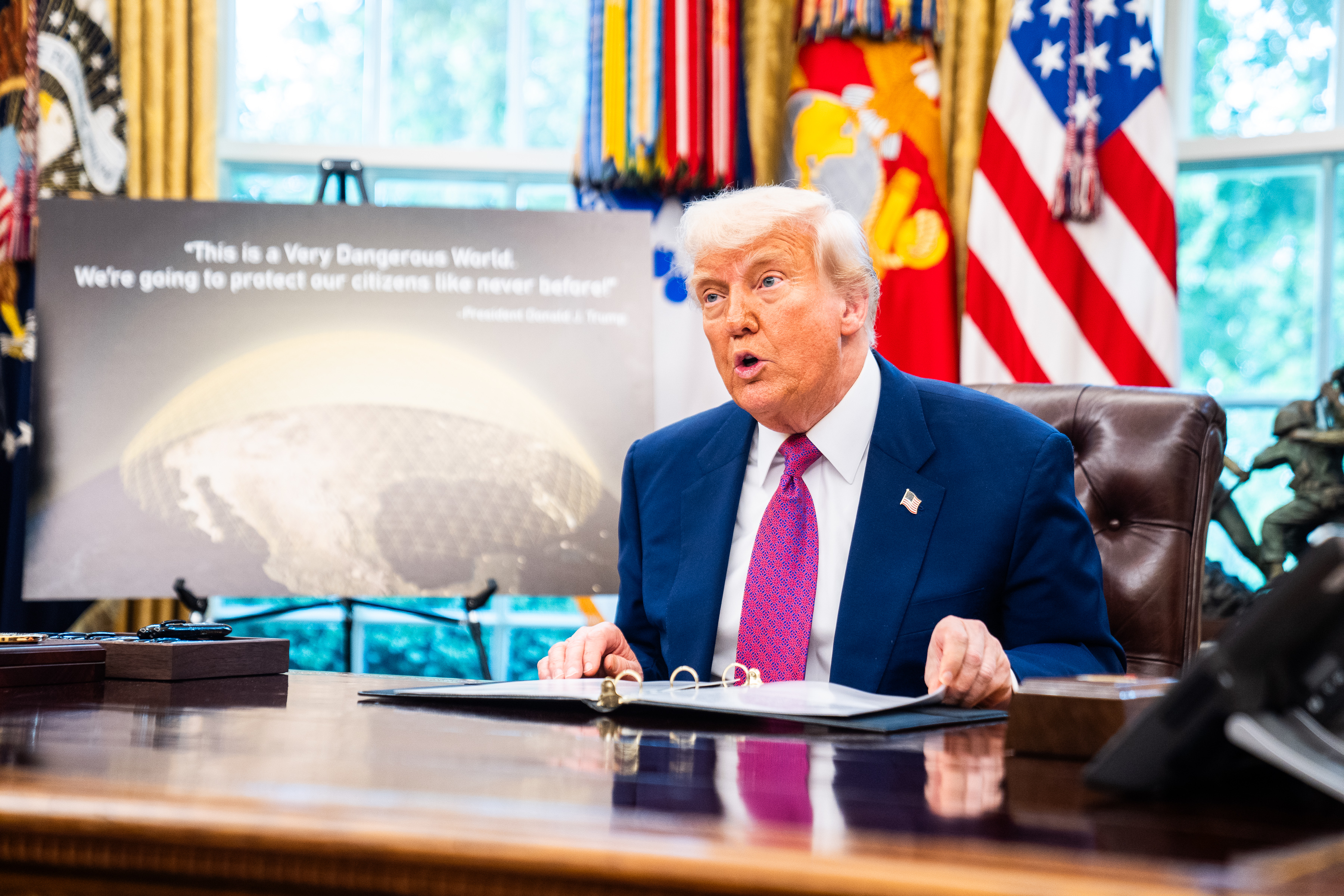
Donald Trump speaks about his plans for a Golden Dome defense system in Washington, D.C., on May 20, 2025 | Source: Getty Images
Trump has stated that the Golden Dome will be fully operational before the end of his current term, which ends in January 2029. According to the White House, the Golden Dome will serve as a multi-layered defense system designed to intercept a wide range of missile threats.
President Trump said it would deploy “next-generation technologies across the land, sea, and space, including space-based sensors and interceptors.”
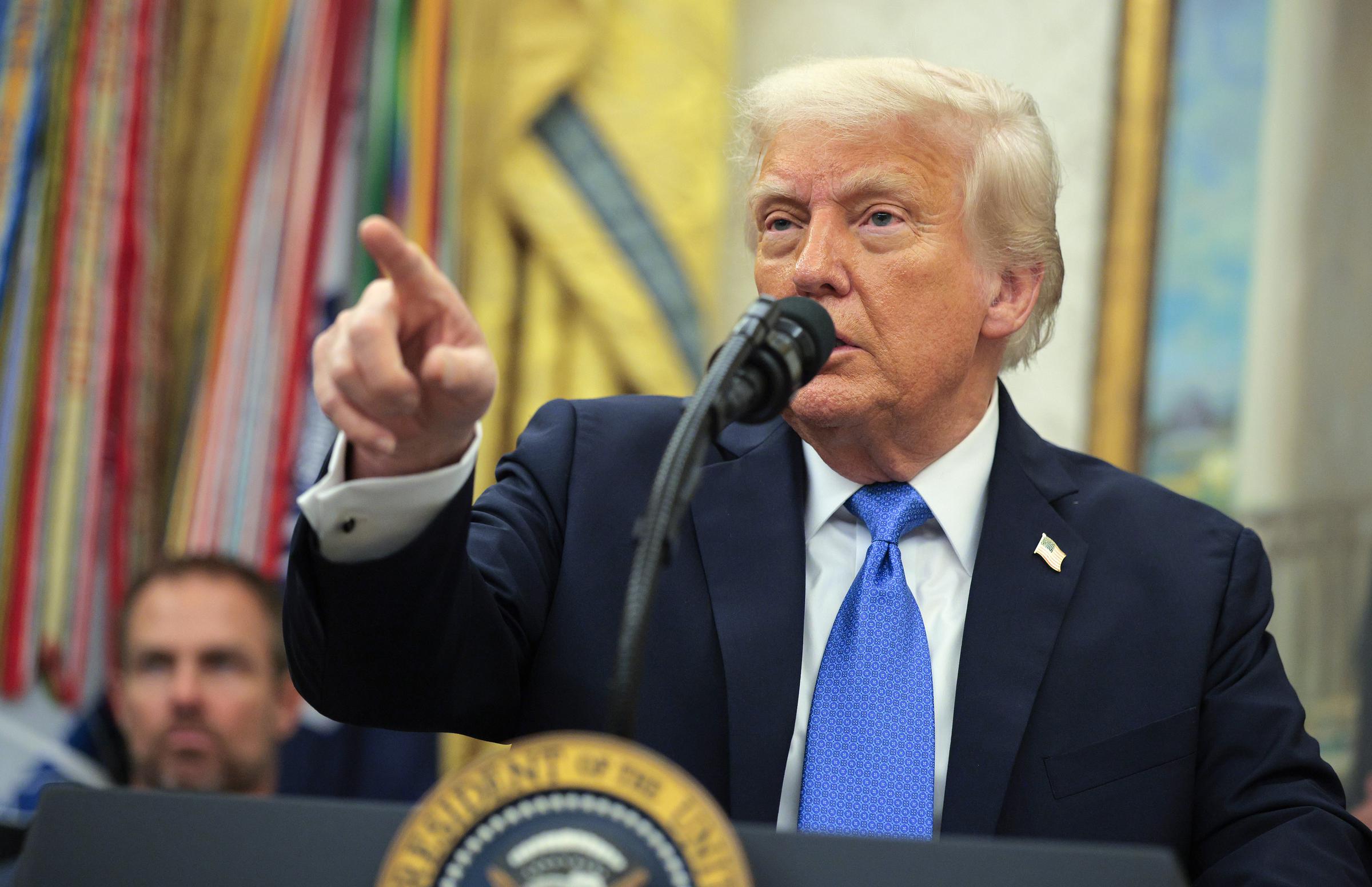
US President Donald Trump speaking in Washington, D.C., on May 19, 2025 | Source: Getty Images
The architecture is intended to detect, track, and destroy projectiles at every stage of flight—before launch, mid-flight, and in the final seconds before impact. The initiative builds upon existing systems while expanding defense capabilities in new domains.
General Gregory Guillot, head of U.S. Northern Command, described a framework that includes three core components: a domain awareness layer to identify incoming threats, an intercontinental ballistic missile (ICBM) defeat layer using ground-based interceptors, and an air layer aimed at countering cruise missiles and other aerial threats.

Gregory M. Guillot, a U.S. Air Force general and the current commander of United States Northern Command (NORTHCOM) and North American Aerospace Defense Command (NORAD), on March 5, 2025 | Source: Getty Images
These layers, taken together, are designed to create continuous coverage over U.S. territory. Trump said construction of system components will begin in several U.S. states, including Alaska, Florida, Georgia, and Indiana.
Each site will play a specific role in building out the infrastructure required to support the dome’s ground-based and space-based operations. Although no contractors have officially been selected, the system is expected to involve several major American defense and technology firms.
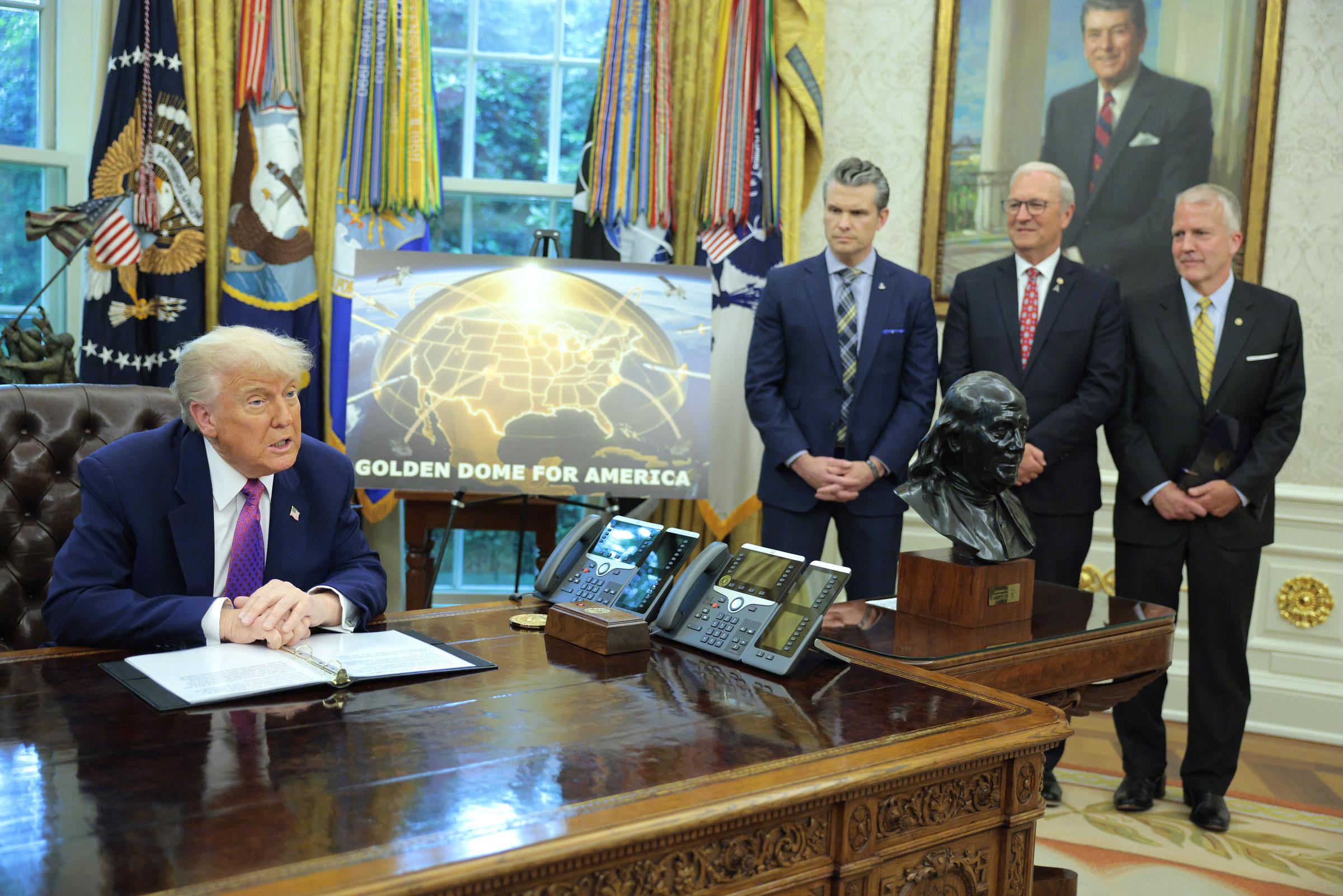
President Donald Trump speaks alongside Secretary of Defense Pete Hegseth, Sen. Kevin Cramer (R-ND) and Sen. Dan Sullivan (R-AK) in the Oval Office at the White House on May 20, 2025 | Source: Getty Images
Trump has said he wants the system to be “all made in the USA.” Even with a proposed budget of $175 billion, the Congressional Budget Office has estimated that the cost of the space-based elements alone could reach $542 billion.
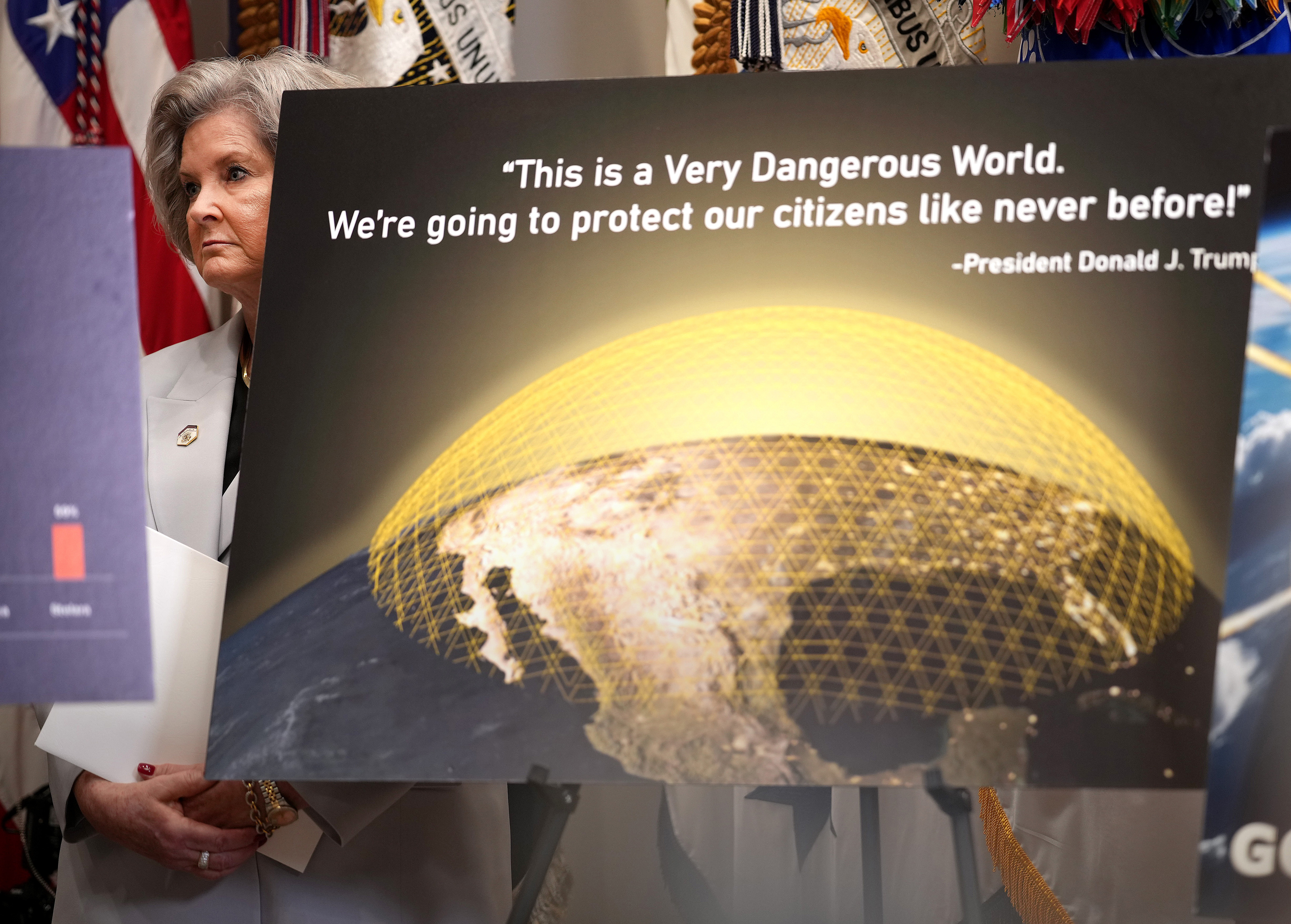
A chart on the Golden Dome missile defense system, on May 12, 2025 | Source: Getty Images
The system is still in its conceptual phase, with the Pentagon continuing to define the requirements the Golden Dome will have to meet. Despite this, Trump has appointed U.S. Space Force General Michael Guetlein to oversee its development, signaling his intent to fast-track the project’s progression.
As plans for the Golden Dome move forward, three companies have already emerged as frontrunners to lead key parts of the system. These include Elon Musk’s SpaceX, software firm Palantir, and defense startup Anduril.
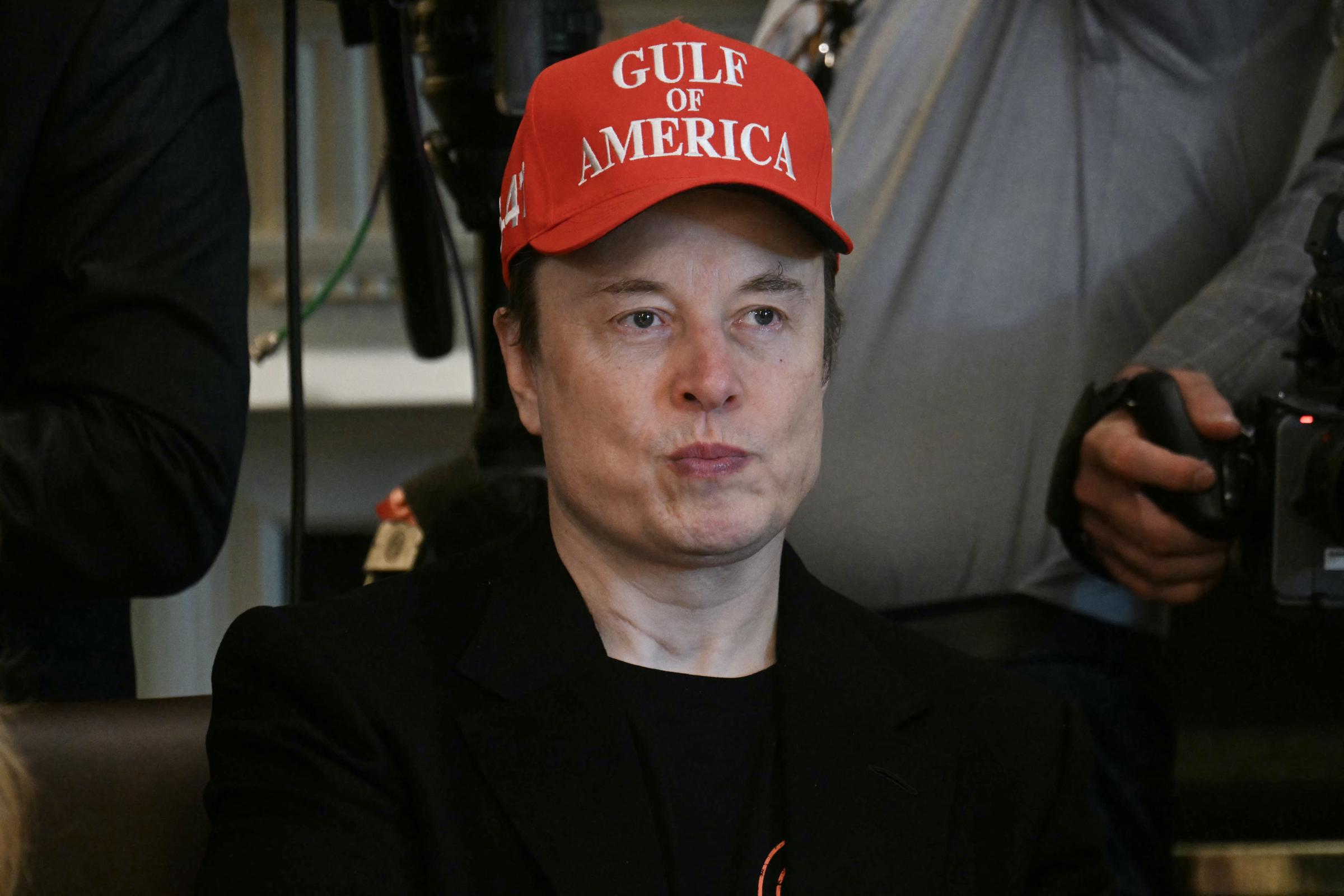
Elon Musk at a cabinet meeting in the White House in Washington, D.C. on April 30, 2025 | Source: Getty Images
According to six sources familiar with the matter, these companies have joined forces to present a unified bid to the Trump administration and the Pentagon.
While final contracts have yet to be awarded, this group is already considered the leading contender to develop critical surveillance components of the defense shield. The proposed system includes the launch of between 400 and more than 1,000 satellites tasked with detecting and tracking missile threats.
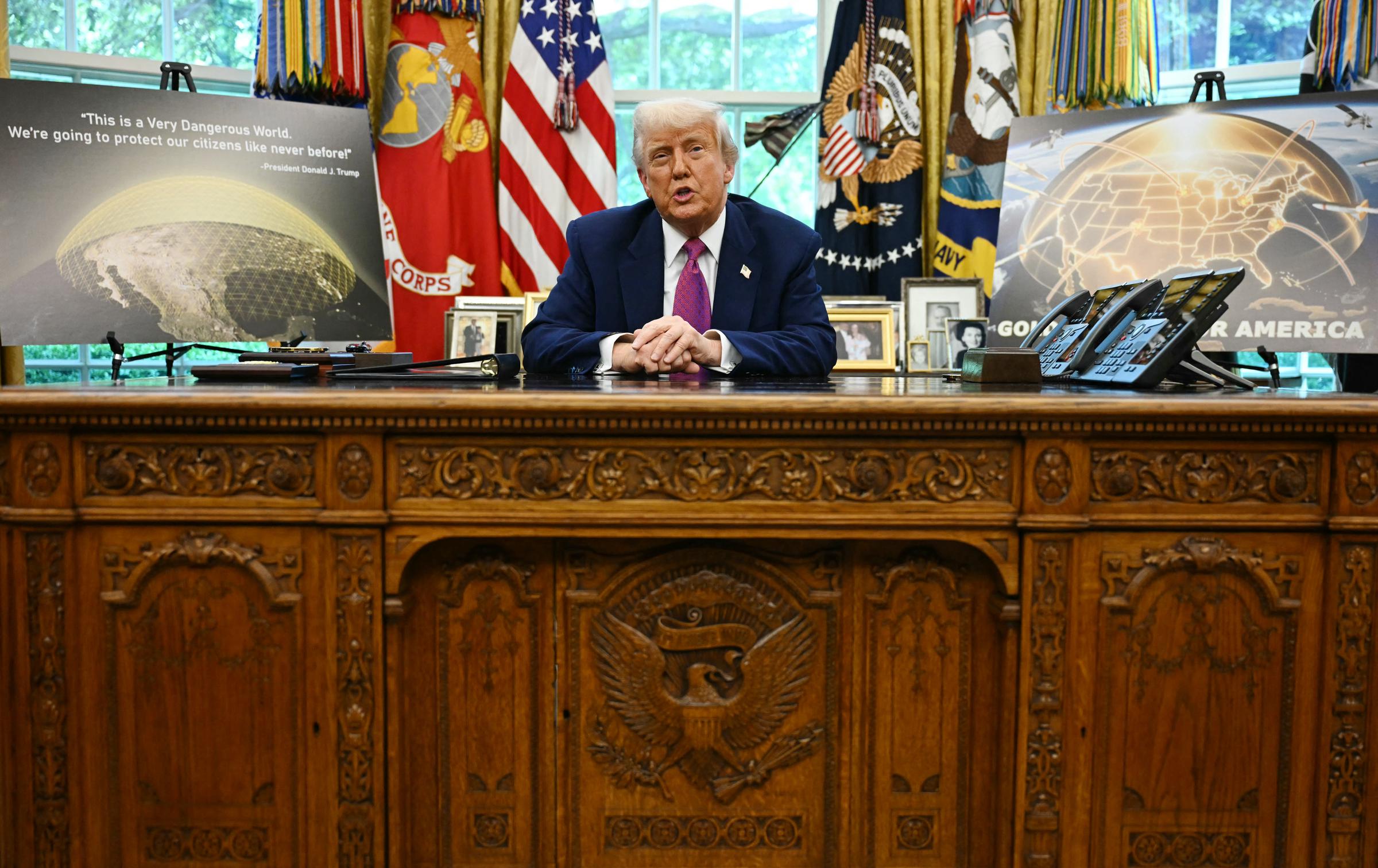
Donald Trump speaks during an announcement about the Golden Dome missile defense shield, in the Oval Office of the White House on May 20, 2025 | Source: Getty Images
These satellites would form a global network capable of sensing hostile projectiles from their point of origin through flight trajectory. A second fleet of around 200 attack satellites—equipped with either missiles or lasers—would be deployed to intercept and neutralize threats in space.
However, sources noted that the SpaceX-led group is not expected to handle the weaponization portion of the system. All three firms involved in the bid were founded by entrepreneurs who have supported Trump politically.
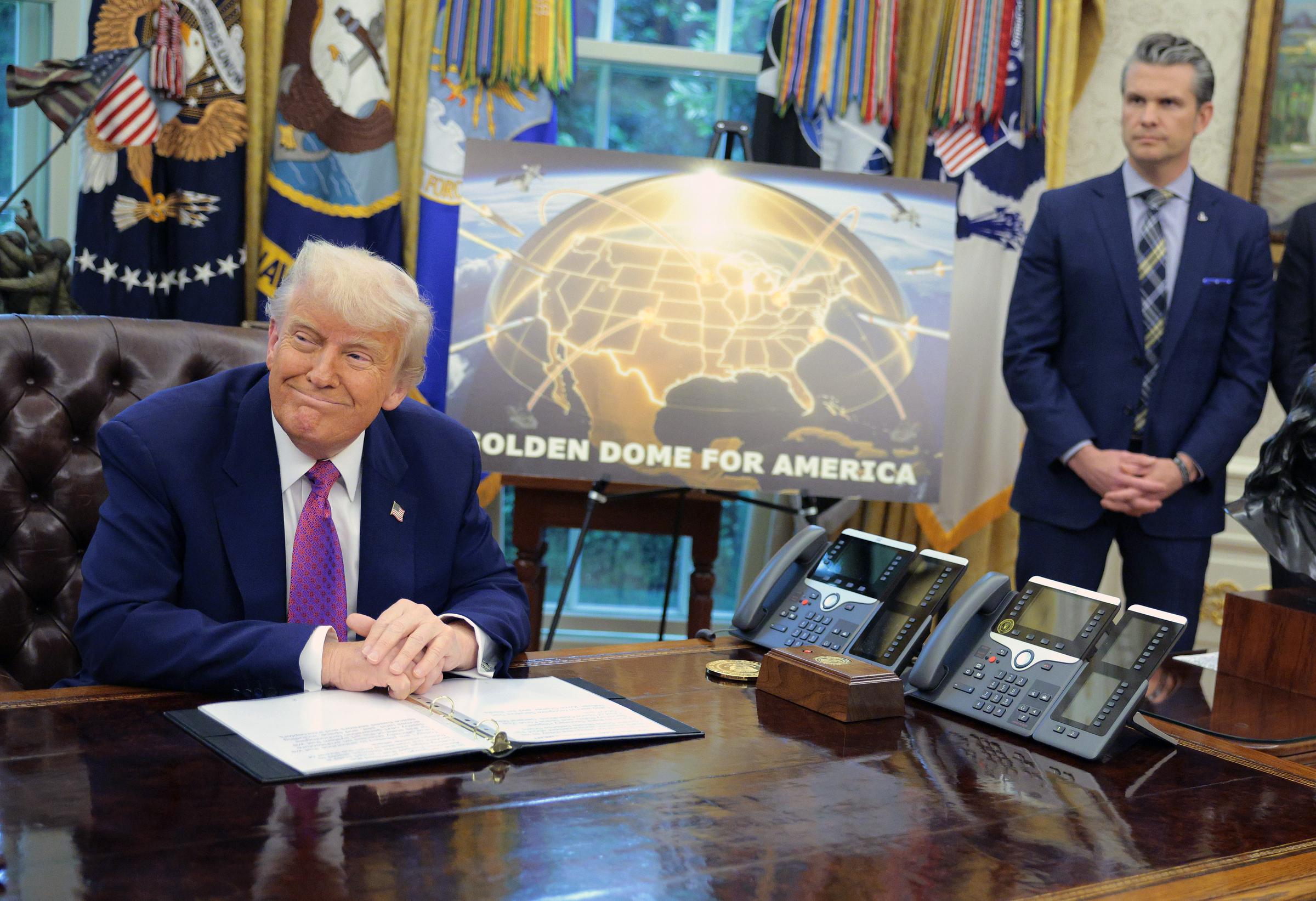
Donald Trump speaks alongside Secretary of Defense Pete Hegseth on May 20, 2025 | Source: Getty Images
Musk, in particular, has donated more than $250 million to support Trump’s political ambitions and currently serves as a special adviser within the Department of Government Efficiency. In recent weeks, representatives from SpaceX, Palantir, and Anduril met with top Pentagon and White House officials to pitch their combined proposal.
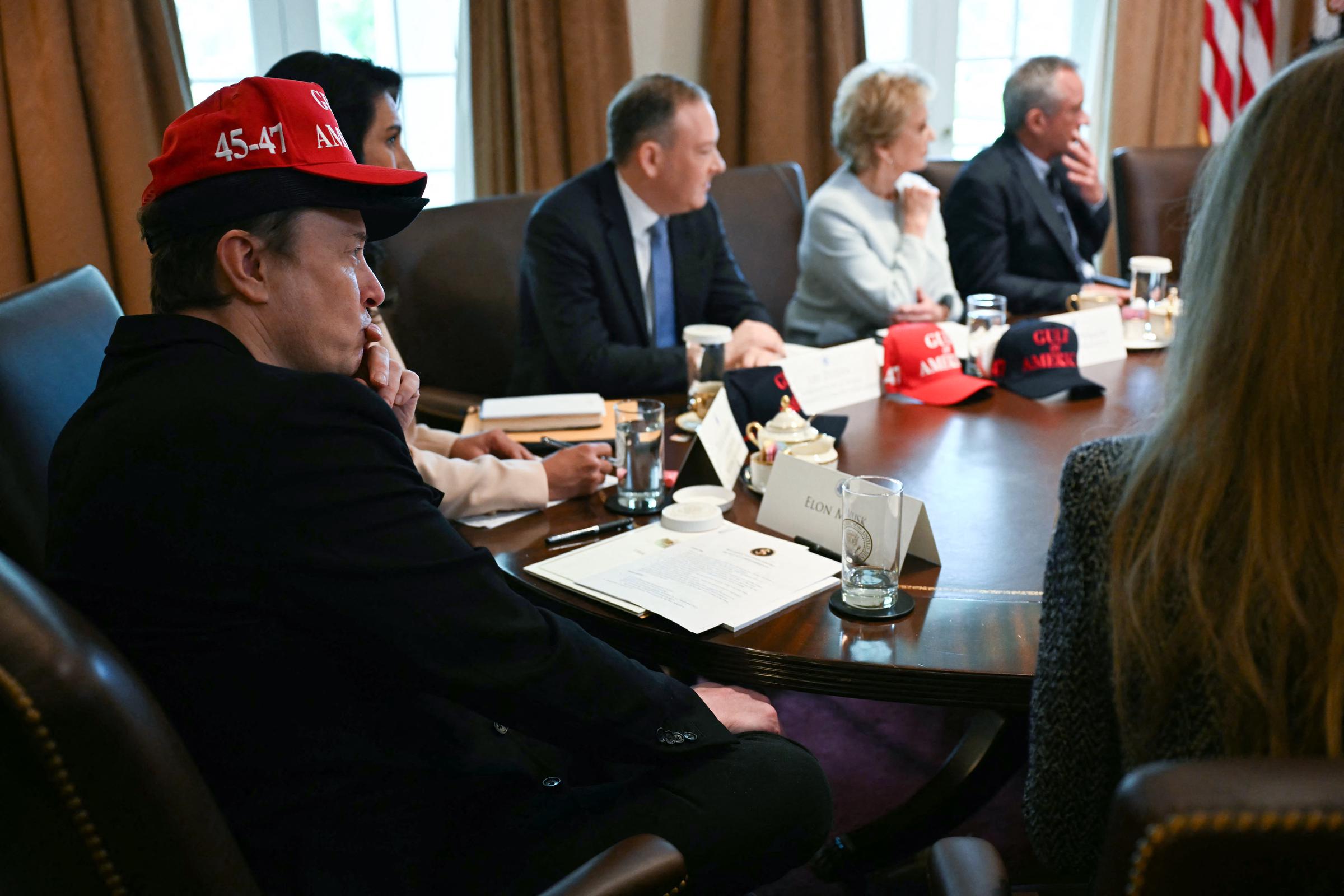
Elon Musk’s sitd with other officials at a cabinet meeting in April 2025 | Source: Getty Images
Though the defense establishment is signaling early support, insiders acknowledge that the selection process is still in its early stages and subject to significant change. For now, the involvement of these companies reflects a growing trend of Silicon Valley firms positioning themselves as central players in U.S. defense innovation.
A newly released unclassified assessment by the Defense Intelligence Agency (DIA) outlines the broad spectrum of missile threats the United States is expected to face by 2035. The report emphasizes that threats to the U.S. homeland would grow not only in number but also in technological sophistication.
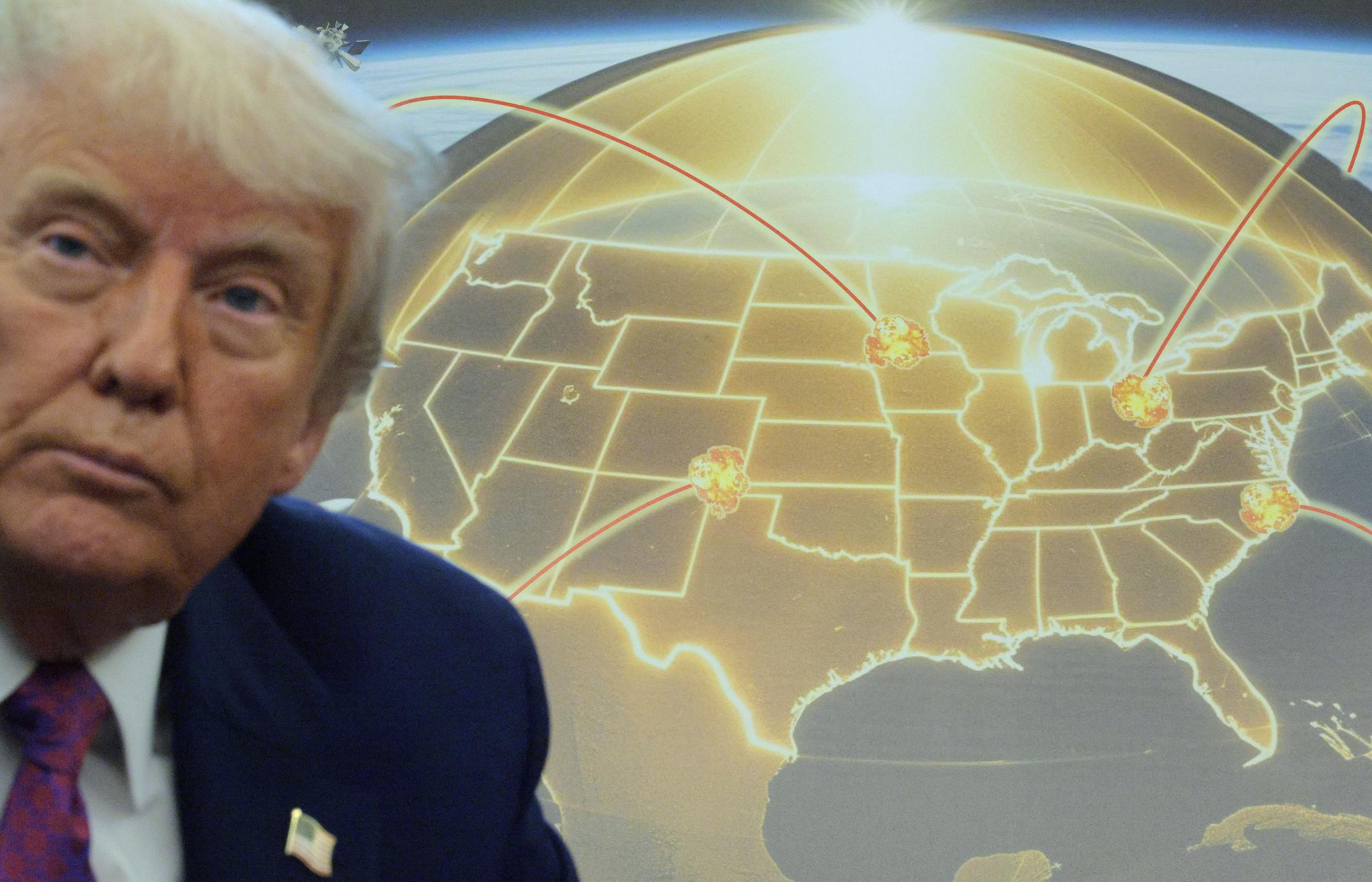
Donald Trump speaks in front of a map of Trump’s proposed “Golden Dome” missile defense system on May 20, 2025 | Source: Getty Images
It points to adversaries including China, Russia, North Korea, and Iran, each advancing various forms of missile capabilities capable of reaching American territory. According to the report, traditional ballistic missiles will remain the primary threat, but other delivery systems are quickly gaining ground.
China and Russia are actively developing advanced hypersonic weapons, submarine-launched ballistic missiles (SLBMs), land-attack cruise missiles, and fractional orbital bombardment systems, each capable of bypassing existing defenses.
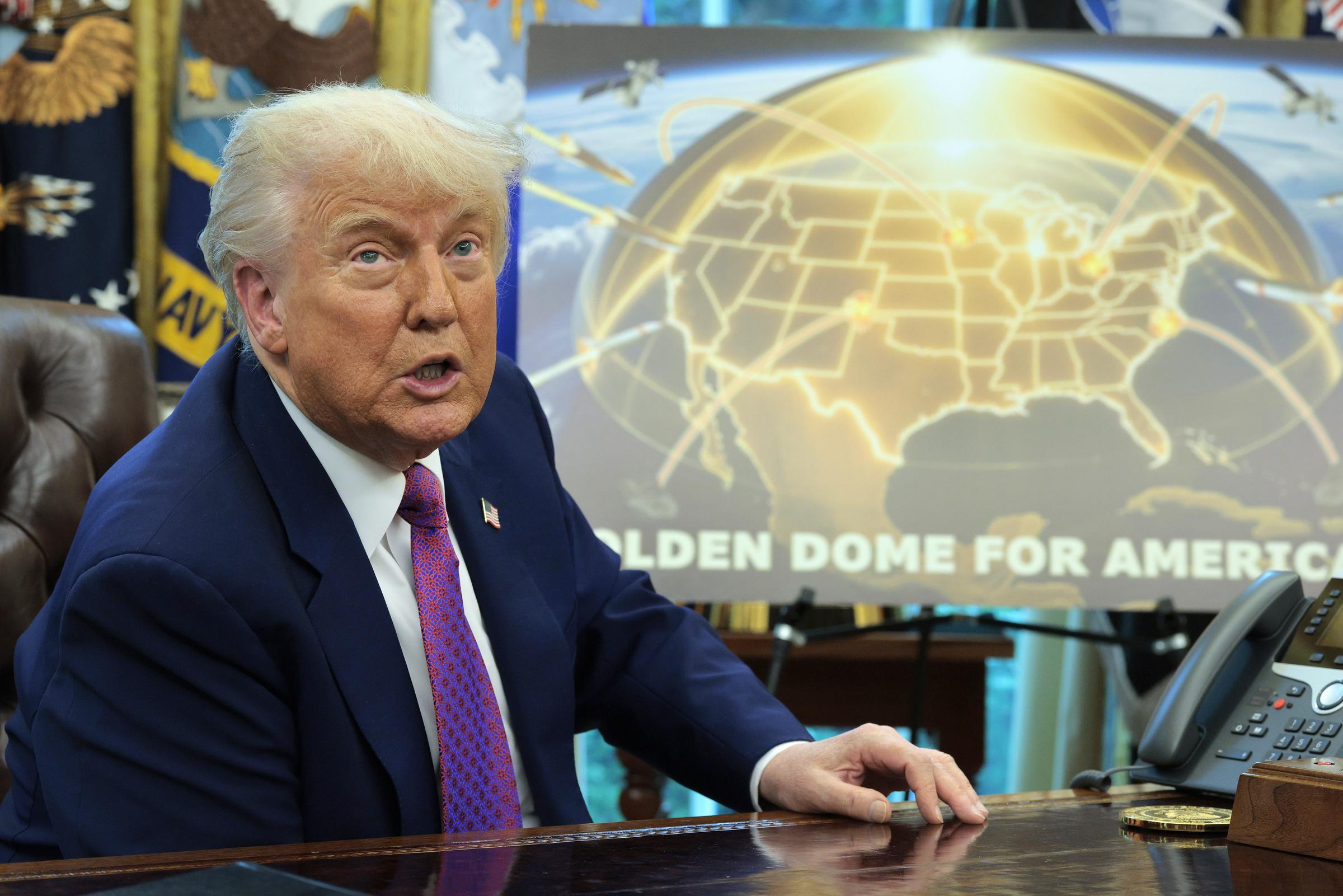
Donald Trump explains the proposed “Golden Dome” missile defense system on May 20, 2025 | Source: Getty Images
The Defense Intelligence Agency (DIA) states, “Missile threats to the U.S. homeland will expand in scale and sophistication in the coming decade,” and warns that “there is no part of the homeland which cannot be struck by existing ICBMs.” North Korea has already tested ballistic missiles capable of reaching the continental United States.
Meanwhile, Iran does not yet have known intercontinental ballistic missiles (ICBMs), but the DIA projects it could develop a viable arsenal, potentially as many as 60 ICBMs, by 2035 if it chooses to pursue that path. The report also notes that Iran’s space launch vehicles could provide a foundation for future missile development.
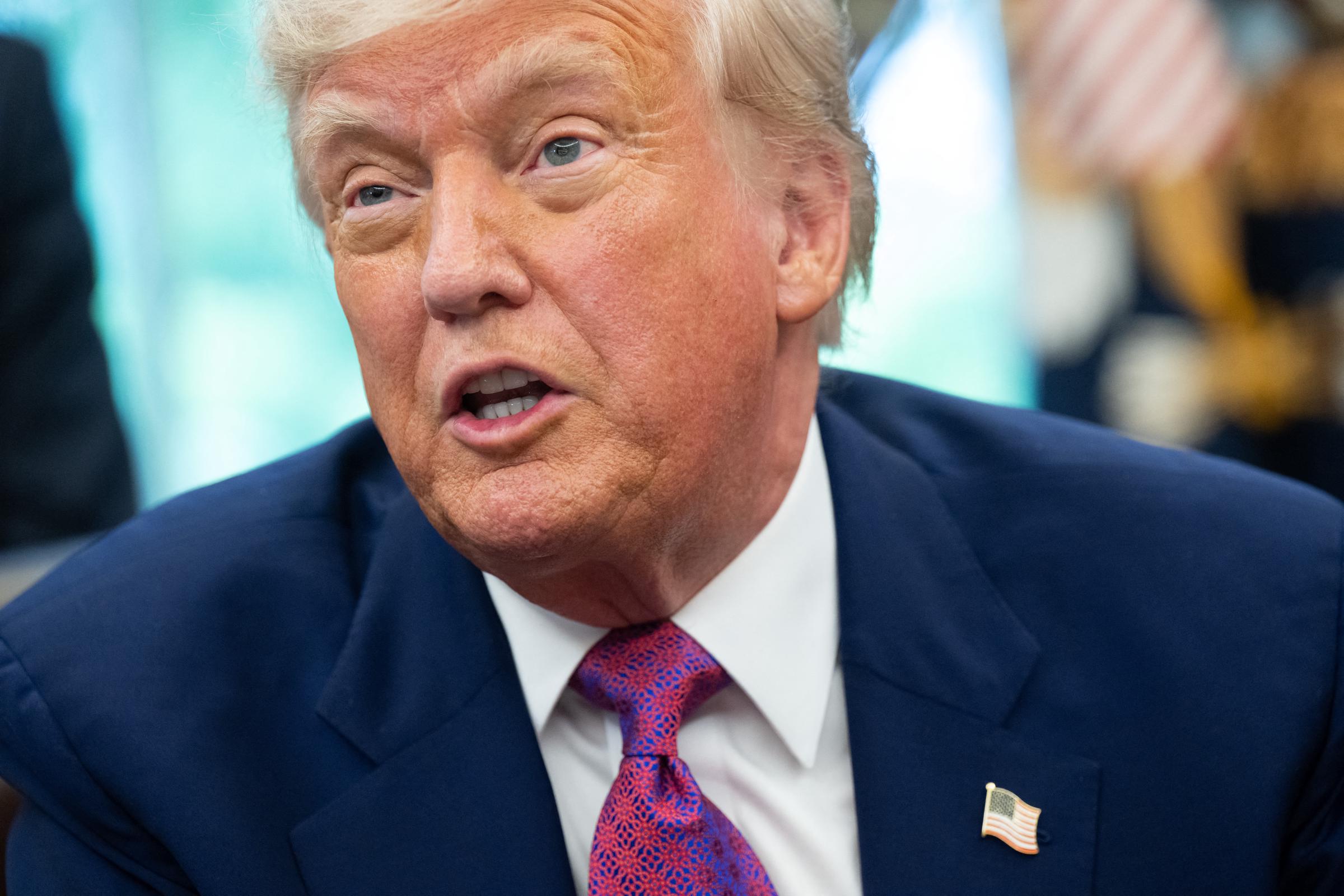
Donald Trump in Washington, D.C., on May 9, 2025 | Source: Getty Images
Beyond land-based and submarine-launched systems, the assessment highlights the increasing risk posed by fractional orbital bombardment systems. These weapons, which can travel over the South Pole to avoid detection by northern-facing radar, could allow adversaries to strike without warning.
The growing capabilities of U.S. rivals form the basis for Trump’s claim that a new defense shield was no longer optional, but essential. President Trump’s formal unveiling of the Golden Dome project in May 2025 drew immediate and forceful criticism from China.

Donald Trump makes an announcement in Washington, D.C., on May 8, 2025. | Source: Getty Images
Although the U.S. cites rising global missile threats as the justification for the system, China has condemned the plan as destabilizing and provocative. At a regular press conference held the day after Trump’s announcement, Chinese Foreign Ministry spokesperson Mao Ning urged the United States to abandon the initiative altogether.
She stated, “China is seriously concerned about this,” adding that the program “violates the principle that the security of all countries should not be compromised and undermines global strategic balance and stability.” Mao criticized the program’s offensive potential and its implications for space militarization.
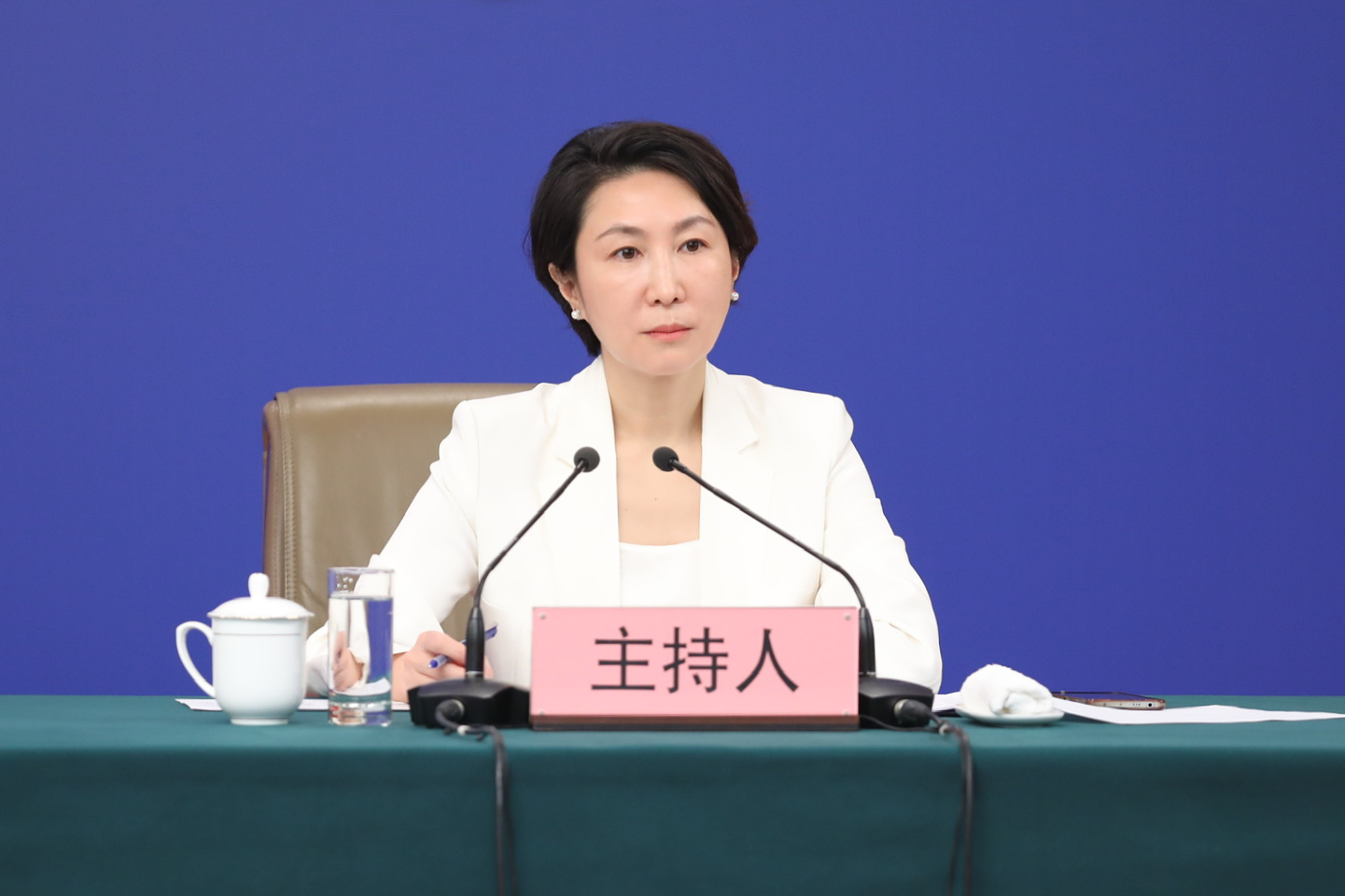
Mao Ning attends a press conference on March 7, 2025 in Beijing, China | Source: Getty Images
She called it a direct threat to the 1967 Outer Space Treaty, which limits military activity in space. “It plans to expand the U.S. arsenal of means for combat operations in outer space, including R&D and deployment of orbital interception systems,” she stated. “That gives the project a strong offensive nature and violates the principle of peaceful use in the Outer Space Treaty.”
She further warned, “This is yet another ‘America First’ initiative that puts the U.S.’s absolute security above all else.” Mao emphasized that the U.S. pursuit of the Golden Dome could destabilize international security frameworks and intensify the global arms race.
Mao concluded by urging the United States to “give up developing and deploying global anti-missile system, and take concrete actions to enhance strategic trust between major countries and uphold global strategic stability.”
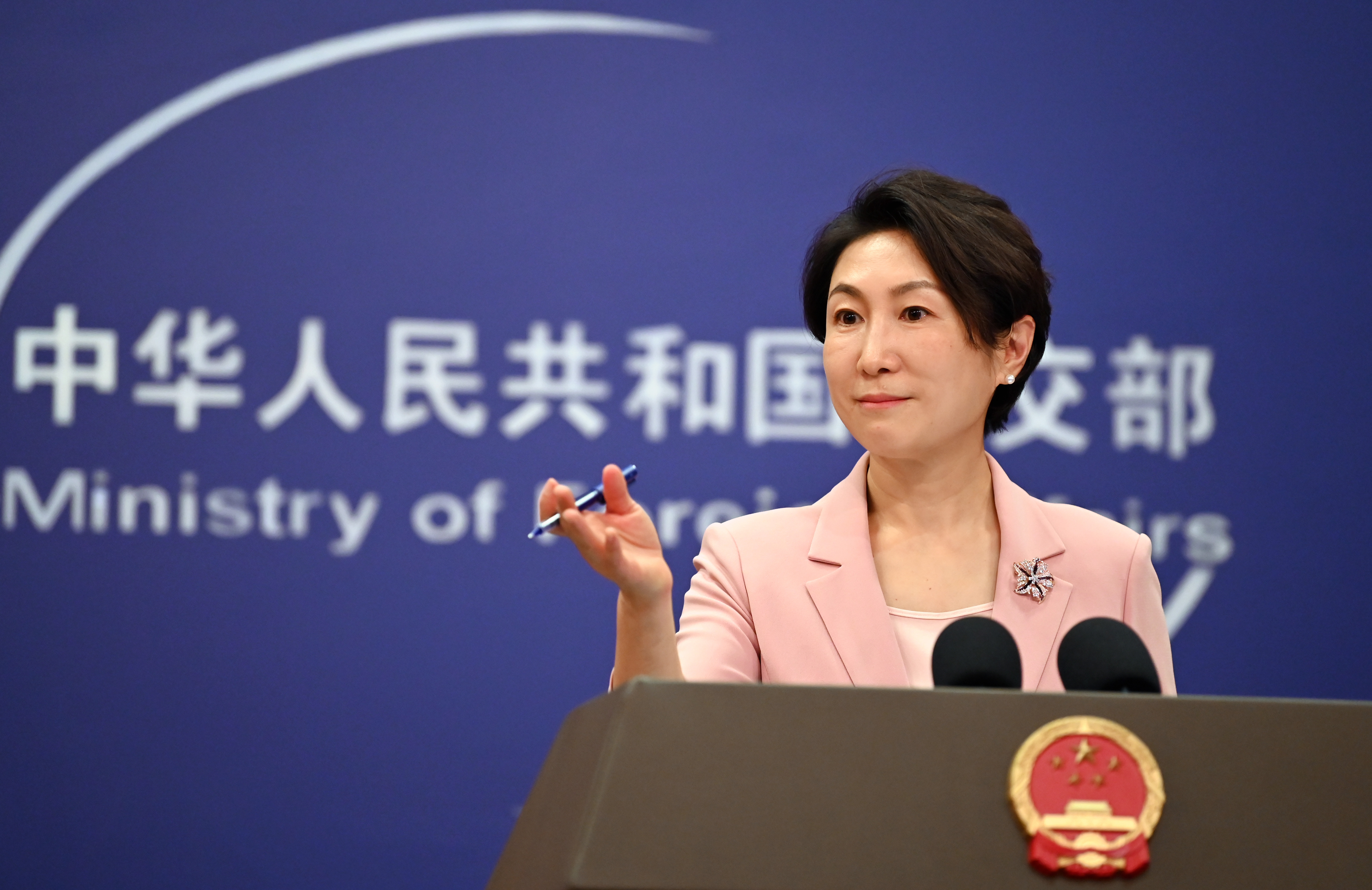
Mao Ning, chief spokesperson for the Chinese Foreign Ministry, speaks at a press conference on January 24, 2025 | Source: Getty Images
While past missile defense systems have focused on terrestrial and near-Earth threats, the Golden Dome initiative proposes an integrated structure with components operating in orbit, potentially introducing U.S. weapons into space for the first time.
Lockheed Martin, one of the nation’s largest aerospace and defense contractors, described the Golden Dome as a “revolutionary concept” and voiced full support for the project. The company referred to it as “a Manhattan Project-scale mission, one that is both urgent and crucial to America’s security.”
Frank St. John, Lockheed Martin’s chief operating officer, said the system would address multiple categories of threats, including nuclear weapons, ballistic missiles, and cruise missiles, by creating overlapping layers of detection and interception.
Despite growing momentum, the project still faces significant hurdles. As of late May 2025, Congress had not approved funding for the system, and the Pentagon continued to work on defining its requirements.
Air Force Secretary Troy Meink confirmed that the initiative remained in the conceptual phase, and many of the proposed capabilities were still under technical review. Meanwhile, international concern about space militarization and the potential for a new arms race continues to grow.


